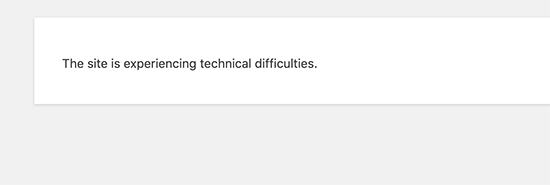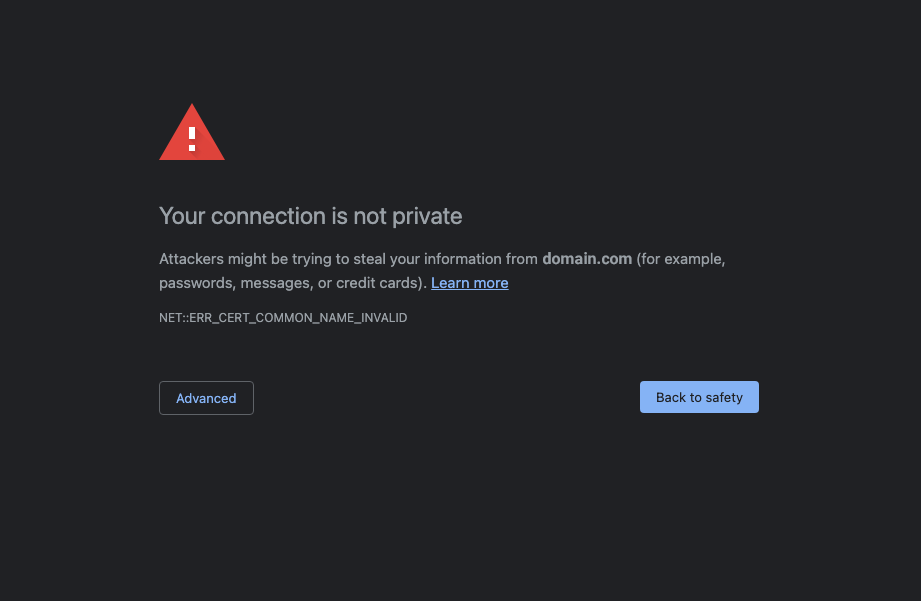WordPress is an amazing content management system that allows anyone to create their own website. It is free, open source software that makes creating websites easier than ever before. Even so, there are a number of common issues in WordPress that can be frustrating and stressful to deal with.
If you’re using WordPress and want to get the most out of it, then you’ll need to learn how to fix common errors. This article will teach you how to fix these problems and save yourself hours of frustration.
1. 500 Internal Server Error
The “500 Internal Server Error” is one of the most common errors in WordPress. Unfortunately it also has many possible causes, which can be overwhelming and stressful for beginners. This error usually means something went wrong with your server or your web host. If you’re getting this message on your site, check your logs for any messages that help you diagnose the problem. You can also reach out to your web host support team for help resolving the issue.
2. 403 Forbidden Error
Your server sets different types of permissions on all the different files needed for your website. A 403 Forbidden error means that your server has blocked your site or page from being accessed by others. Like the 500 Internal Server error, there are many reasons as to why this happens. The best way to find out why they’ve done this is to contact your web host support team to diagnose the issue.
3. 404 Not Found Error
A 404 Not Found error means that this particular WordPress page you are trying to access does not exist. Some common causes include deleted pages or changes in the page slug.
Things To Try
- If the page was deleted in error, simply restore the page. If the page should be removed, then consider implement a redirect to a proper page.
- Change the page slug back to the original if the page slug was modified. If the slug was intentionally modified, then consider adding a redirect from the old slug to the new one.
- If the error is caused by a permalink settings issue, then the most common fix in this scenario is to save your permalink settings again to flush the rewrite cache.
4. 502 Bad Gateway Error
A 502 Bad Gateway error occurs when the server you are connecting to is a proxy for the inbound server, and the inbound server sent a bad response to the proxy server. There are a number of reasons why the server received a bad response. Most of the time, the server may just be overloaded and the issue resolves itself. In other cases, you may need to contact your hosting provider for assistance.
5. 503 Service Unavailable Error
A 503 Service Unavailable Error means your server is unable to handle your request. This could mean that the server is down or experiencing technical difficulties. First, try refreshing the page to see if it is a temporary issue. If the issue persists, it could be due to a number of reasons. In this case, it’s best to contact your web host support team for their help.
6. 504 Gateway Timeout Error
A 504 Gateway Timeout Error is similar to a 502 Bad Gateway Error. However, instead of receiving bad response, the proxy server timed out while waiting for the inbound server. This could happen for a variety of reasons including high traffic, firewall or CDN issues, or issues in the proxy settings.
7. This Site Is Experiencing Technical Difficulties

This error message was added in WordPress 5.2 as part of a fatal error protection feature that gets displayed instead of the famous “White Screen of Death.” When this error is triggered, WordPress will send an email notification to your admin email address.
This error is usually caused by a PHP memory limit error or a plugin or theme conflict after an update. Sometimes the error can be triggered because your WordPress site is in the middle of an update. If that is the case, the issue will resolve itself once the update is complete.
8. Error Establishing Database Connection
This is a common error where WordPress is unable to connect to the database. This can be caused by incorrect database credentials, a faulty connection to the database server, or a corrupted database.
Things To Try
- Make sure your database username and password are correct in wp-config.php
9. WordPress Memory Limit Error
This error comes in the form of “Fatal error: Allowed memory size of xxx bytes exhausted (tried to allocate xxx bytes).” This happens when a script or plugin uses too much of your server’s allocated memory.
Things To Try
- Deactivate plugins one-by-one to see if any of them are causing the issue
- Switch to a default theme to test if your theme is causing the issue
10. White Screen of Death
The famous “White Screen of Death” causes a blank screen on your site. In some cases, you might also be locked out of the dashboard admin area. The White Screen of Death can be caused by a memory limit error or a plugin compatibility issues. Usually, the best course of action is to track down the error log to see what happened.
Things To Try
- Disable all plugins by renaming the plugins folder or via the database
- Replace your theme with the default theme
- Contact your host to increase your memory limit
11. Destination Folder Already Exists
All WordPress themes and plugins install their files into a folder named after the plugin or file. The “Destination Folder Already Exists” error occurs when you try to install a different plugin or theme that happens to share the same folder name as an existing plugin or theme, or when you try to upload the same plugin or theme when it is already installed. When this happens, you will need to delete the existing folder via FTP in order to install the new plugin or theme.
Things To Try
- Delete existing folder via FTP
12. Your Connection Is Not Private

This error happens when your browser detects an issue with the SSL certificate of your site. The warning may vary from browser to browser, but they all prevent users from going directly to the site.
Things To Try
- Check with another browser to see if it’s showing the same warning
- Force reload the page
- Clear your browser cache
- Reinstall your SSL certificate
13. Mixed Content Warnings
Mixed Content warnings occur when your WordPress site loads resources using an HTTP URL as opposed to an HTTPs URL. The most common scenarios are when a theme or plugin may load an asset using HTTP, or when an old URL was not updated when you switch from HTTP to HTTPs.
Things To Try
- Open the web inspector and identify which files are incorrectly referenced and fix them
- Use a plugin such as Really Simple SSL
14. Locked Out of WordPress Admin Dashboard
Getting locked out of your WordPress dashboard is very stressful. There are quite a few possible causes for this problem. Sometimes you are locked out because you forgot your password, or you created a custom login URL but forgot what it is. Other times it could be due to a hack or faulty code. As always, it is wise to regularly maintain and keep backups of your site.
Things To Try
- Disable your plugins, particularly those having to do with login security
- Reset your password, or if you are unable to, try resetting your password via the database
15. Login Page Keeps Refreshing or Redirecting
Sometimes after you try to log in, you get redirected back to the login page instead of the admin dashboard. This can happen when there are plugin conflicts or incorrect WordPress home URLs in the database.
Things To Try
- Try logging in via /wp-login.php instead of /wp-admin
- Make sure your home URL and site URL are correct in the database
16. Stuck in Maintenance Mode
Your WordPress site goes into Maintenance Mode when you run updates. If you visit the site during updates, you may see the following message: “Briefly unavailable for scheduled maintenance. Check back in a minute.” If the updates are interrupted, the site may become stuck in Maintenance Mode.
When this happens, access your site files via FTP, and delete the file named .maintenance. That will take your site out of maintenance mode.
17. Changes Aren’t Immediately Visible In Your Live Site
If you can’t see your most recent changes to the site, it is likely due to a caching issue, whether it’s on the server, in your browser, or both.
Things To Try
- First, make sure your content is actually published
- Clear your browser cache
- If you use a caching plugin, clear its cache
- Most web hosts also have a caching layer. Contact the support team to find out how to clear those
18. WordPress Not Sending Email
Email is an integral part of your WordPress site. WordPress uses email to notify site owners of updates and comments and to help users recover their passwords. However, many web hosts limit the resources your site can use, and sometime that prevents WordPress from sending emails. These email issues can be addressed by switching to an email plugin.
Things To Try
- Contact support to see if they can allow email sending
- Install an email plugin, such as WP Mail SMTP, to let WordPress send email through a proper email service
19. Too Many Redirects
This error happens when there is a redirect loop, where one URL is pointing to another URL that is pointing back at the same URL. This is usually caused by faulty plugin or theme code, but can also happen if you set your redirects improperly using plugins such as Redirection.
Things To Try
- Clear your browser cookies
- Deactivate all your plugins
20. PHP Errors
PHP errors and warnings may show up at the top of your WordPress dashboard. Depending on your server configuration and the type of error involved, these warnings may even show up on the front end of your site. While these warnings should not be ignored, it is possible to turn them off. Whether you turn off the warnings or not, it is advisable to get your developer to look over these warnings to make sure your site is running smoothly.
21. “An automated WordPress update has failed to complete – please attempt the update again now.”
This error happens when your WordPress site goes into maintenance mode after updates are complete. Manually updating any themes and plugins that did not update should fix the issue. If you continue to see the error then your site may still be in maintenance mode. In that case, follow the tips for getting out of maintenance mode.
22. Incorrect Facebook Thumbnail
Facebook automatically tries to pull an image from your site to represent your shared web page in the News Feed. When Facebook can’t determine the proper image to use, you’ll run into the incorrect thumbnail issue. This usually happens when there isn’t an image specified in the Open Graph tag for Facebook.
Things To Try
- Use a plugin, such as Yoast SEO, to help you set Facebook thumbnails
- Make sure the page you are sharing has Open Graph tags that specify an image for Facebook to use
23. Missed Scheduled Post
WordPress allows you to schedule a post to be published in the future. WordPress uses something called “WP-Cron” to perform automated tasks, such as publishing a post. Since WP-Cron is a web-based system, it only triggers when someone visits your site. If you have a low traffic site, or if no one visits your site during the scheduled publishing time, WP-Cron will not run, and the post is not published.
Things To Try
- Install the Missed Scheduled Post Publisher plugin, which checks your site every 15 minutes for scheduled posts.
